Superfund Sites in Reuse in Michigan
If you are having trouble viewing the map in your browser, click the 'View larger map' link below
Aircraft Components (D & L Sales)
The 17-acre Aircraft Components (D & L Sales) Superfund site is located next to the Paw Paw River in Benton Harbor, Michigan. Several manufacturing companies used on-site buildings for operations, including an airplane parts resale business. Some of the aircraft parts contained radioactive materials. Site investigations identified deterioration of some of the aircraft parts, raising a concern that the radioactive materials could leak out. EPA conducted emergency cleanup activities at the site in 1995, including installation of a gate and fencing, boarding up of on-site buildings, posting of warning signs, covering piles of radioactive materials and consolidation of waste materials. EPA placed the site on the Superfund program’s National Priorities List (NPL) in 1996. Cleanup activities included removal and disposal of radioactive materials, contaminated soil and sediment, as well as cleanup of some on-site buildings and groundwater treatment. Today, the site is part of a community-wide development project. A golf course covers a portion of the site. In 2010, EPA amended the cleanup plan to allow for residential development on a portion of the site.
For more information:
Allied Paper, Inc./Portage Creek/Kalamazoo River
The Allied Paper, Inc./Portage Creek/Kalamazoo River Superfund site is located in the counties of Allegan and Kalamazoo in Michigan. The site includes 80 miles of the Kalamazoo River, adjacent river banks and floodplains, a 3-mile stretch of Portage Creek, five landfills and one paper mill property. The paper mill and the landfills on site discharged and disposed of contaminated paper residuals into Portage Creek and the Kalamazoo River, resulting in soil and sediment contamination. The State of Michigan identified contaminated river sediments in 1971. EPA added the site to the Superfund program’s National Priorities List (NPL) in 1990. Cleanup activities included soil removal, stabilization, capping and installation of groundwater monitoring systems at four of the five landfills. In 2006, the City of Plainwell purchased a portion of the site a where paper mill formerly operated. The former paper mill area is now on the National Historic Registry. EPA provided reuse planning assistance to support the City's evaluation of reuse opportunities in 2008. Redevelopment work began in 2010, when the City of Plainwell and Conestoga-Rovers & Associates (CRA) entered into an agreement for the redevelopment of the 36-acre former paper mill. CRA relocated its U.S. Construction headquarters to the site in 2012, relocating 50 jobs to the site. The City of Plainwell completed a $1.7 million renovation of the former de-watering building for the purpose of housing its Public Safety Department. The City has moved City Hall to the site and has obtained a grant to expand parking for employees at the site. Local artists are used some of the salvaged materials from the site to create a sculpture near the new main entrance into the mill complex. CRA and city officials remain focused on filling the property with various residential and commercial facilities. The Kalamazoo River is used for recreational purposes including swimming, boating and fishing.
For more information:
- Redevelopment of the Plainwell Paper portion of the Allied paper, Inc./Portage Creek/Kalamazoo Superfund Site (PDF)(1 pg, 735 K, About PDF)
- Historic Preservation and Mixed-Use Superfund Redevelopment, The Plainwell Paper Mill in Plainwell, Michigan (PDF) (16 pp, 1.7 MB)
- Superfund Site Profile Page
Anderson Development Co.
The 12-acre Anderson Development Co. Superfund site is an active chemical manufacturing facility in Adrian, Michigan. From 1970 to 1979, Anderson Development Company (ADC) produced highly toxic chemicals at the site. Site operators released discharges from the manufacturing processes to surface water and air, causing widespread contamination. EPA placed the site on the Superfund program’s National Priorities List (NPL) in 1983. The site’s potentially responsible party (PRP) conducted cleanup activities at the site and off-site residences under EPA and state oversight. Activities included cleanup of affected homes, sampling within homes, treatment of contaminated soil and sediment on site, and extension of the public water supply. The PRP completed cleanup in 1993 and accomplished all cleanup goals. EPA deleted the site from the NPL in 1996. ADC continues operations on site.
For more information:
Avenue "E" Ground Water Contamination
The 435-acre Avenue “E” Ground Water Contamination Superfund site is located in Traverse City, Michigan. The site includes an active U.S. Coast Guard Air Station and surrounding areas. Since 1943, the U.S. Navy has conducted industrial operations on site using oils, lubricants, paint, gasoline and volatile solvents. Improper handling, direct dumping and spills contaminated site groundwater. In 1980, private residences near the station reported well water contamination. After investigating, EPA added the site to the Superfund program’s National Priorities List (NPL) in 1996. Working with the State of Michigan, the U.S. Coast Guard led site cleanup activities, including the installation of facilities to pump and treat groundwater. EPA deleted the site from the NPL in 2007, after groundwater reached cleanup standards. The U.S. Coast Guard continues to use the site as a functioning air station, while off-site groundwater monitoring continues.
For more information:
Bendix Corp./Allied Automotive
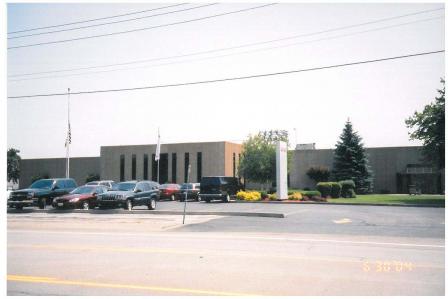 Bendix Corp./Allied AutomotiveThe 20-acre Bendix Corp./Allied Automotive Superfund site is located in St. Joseph, Michigan. The Robert Bosch Corporation, the site’s current owner, operates a brake manufacturing facility on site. In the 1950s and 1960s industrial activities included disposal of chemical waste in unlined lagoons. These waste handling practices resulted in both on-site and off-site groundwater contamination. EPA placed the site on the Superfund program’s National Priorities List (NPL) in 1990. EPA’s cleanup includes groundwater monitoring, soil vapor extraction and vapor phase treatment, as well as groundwater extraction and treatment. Treatment and monitoring are ongoing, and institutional controls prohibit the use of groundwater in contaminated areas. The brake manufacturing facility has remained active during cleanup, and modern waste handling practices ensure the proper disposal of industrial by-products.
Bendix Corp./Allied AutomotiveThe 20-acre Bendix Corp./Allied Automotive Superfund site is located in St. Joseph, Michigan. The Robert Bosch Corporation, the site’s current owner, operates a brake manufacturing facility on site. In the 1950s and 1960s industrial activities included disposal of chemical waste in unlined lagoons. These waste handling practices resulted in both on-site and off-site groundwater contamination. EPA placed the site on the Superfund program’s National Priorities List (NPL) in 1990. EPA’s cleanup includes groundwater monitoring, soil vapor extraction and vapor phase treatment, as well as groundwater extraction and treatment. Treatment and monitoring are ongoing, and institutional controls prohibit the use of groundwater in contaminated areas. The brake manufacturing facility has remained active during cleanup, and modern waste handling practices ensure the proper disposal of industrial by-products.
For more information:
Butterworth #2 Landfill
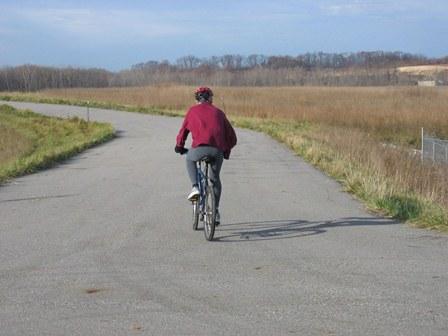 Butterworth #2 LandfillThe Butterworth #2 Landfill Superfund site is located in Grand Rapids, Michigan. The site includes 120 acres along the Grand River. From 1950 until 1967, the City of Grand Rapids operated the landfill as an open dump and later as a sanitary landfill. Landfill operations contaminated groundwater and soil. EPA placed the site on the Superfund program’s National Priorities List (NPL) in 1983. Under EPA oversight, the site’s potentially responsible parties (PRPs) conducted cleanup activities. Cleanup included capping the landfill and installing groundwater monitoring wells at the site. In 2002, the City of Grand Rapids began to discuss possible future uses for the site. To convert the site to a public recreation area, the City of Grand Rapids worked with EPA to develop a reuse plan that would ensure the protectiveness of the site’s remedy and allow opportunities for multiple recreational uses, including sports fields, walking and biking trails, and a skate park. The City held community meetings in 2005 and 2006 and continues to work with the local community and recreation organizations to execute the reuse plan. In 2009, the City completed a small bike trail across the site. EPA and the City have also worked together to allow access to the on-site road for a local marathon running race. Additionally, EPA worked with the City to assess the possibility of constructing a solar energy generation facility on part of the site. EPA and the City also worked with the property owners to allow for this type of reuse. In 2015, the City finalized negotiations with a developer, and the design is currently underway. Once operational, the City’s wastewater treatment plant will use the power generated by the solar array.
Butterworth #2 LandfillThe Butterworth #2 Landfill Superfund site is located in Grand Rapids, Michigan. The site includes 120 acres along the Grand River. From 1950 until 1967, the City of Grand Rapids operated the landfill as an open dump and later as a sanitary landfill. Landfill operations contaminated groundwater and soil. EPA placed the site on the Superfund program’s National Priorities List (NPL) in 1983. Under EPA oversight, the site’s potentially responsible parties (PRPs) conducted cleanup activities. Cleanup included capping the landfill and installing groundwater monitoring wells at the site. In 2002, the City of Grand Rapids began to discuss possible future uses for the site. To convert the site to a public recreation area, the City of Grand Rapids worked with EPA to develop a reuse plan that would ensure the protectiveness of the site’s remedy and allow opportunities for multiple recreational uses, including sports fields, walking and biking trails, and a skate park. The City held community meetings in 2005 and 2006 and continues to work with the local community and recreation organizations to execute the reuse plan. In 2009, the City completed a small bike trail across the site. EPA and the City have also worked together to allow access to the on-site road for a local marathon running race. Additionally, EPA worked with the City to assess the possibility of constructing a solar energy generation facility on part of the site. EPA and the City also worked with the property owners to allow for this type of reuse. In 2015, the City finalized negotiations with a developer, and the design is currently underway. Once operational, the City’s wastewater treatment plant will use the power generated by the solar array.
For more information:
- Butterworth Landfill, Grand Rapids, MI - Reuse Characterization (PDF) (13 pp, 4.3 MB, About PDF)
- Butterworth Landfill, Grand Rapids, MI - Reuse Assessment (PDF) (12 pp, 5.9 MB)
- Superfund Site Profile Page
Folkertsma Refuse
The Folkertsma Refuse Superfund site is located in Grand Rapids, Michigan. Beginning in the mid-1960s, the site accepted a variety of wastes, including foundry sand and construction debris. After changing ownership several times, the landfill closed in 1972 and a wood pallet business began operation at the site. EPA conducted an investigation in 1984 and found contamination in groundwater, sediment and landfill materials. In 1989, EPA added the site to the Superfund program’s National Priorities List (NPL). The site’s potentially responsible parties (PRPs) conducted cleanup activities at the site from 1991 until 1994. Cleanup activities included removing contaminated sediment and placing the sediment in the landfill. The PRPs constructed a clay cap over the landfill. The wood pallet repair and manufacturing business relocated to an on-site area north of the landfill. The relocation enabled the firm to continue to operate during and after cleanup activities. The business continues operations at the site. The site’s PRPs continue to conduct site inspections as well as groundwater and surface water monitoring.
For more information:
Grand Traverse Overall Supply Co.
The 1-acre Grand Traverse Overall Supply Co. Superfund site is located Greilickville, Michigan. A commercial dry cleaning business operated at the site from 1968 until 1987. Until 1977, site operators disposed of waste in a dry well and several lagoons on site, resulting in contamination of groundwater. EPA added the site to the Superfund program’s National Priorities List (NPL) in December 1982. Since 2005, EPA has conducted cleanup activities at the site, including installation of a soil vapor mitigation system at the Norris School next to the site, demolition of the on-site facility and removal of contaminated soil. After completing soil cleanup activities at the site, EPA installed a groundwater extraction and treatment system. In 2014, an arts organization purchased the site and the adjacent Norris School for redevelopment as the Grand Traverse Recreational Art Center. Professional artists, fitness and health studios, and local businesses occupy the Grand Traverse Regional Arts Campus, also known as Leelanau Studios.
For more information:
H. Brown Co., Inc.
The 4-acre H. Brown Co., Inc. Superfund site is located in Grand Rapids, Michigan. From 1961 through 1981, H. Brown Co., Inc., owned and operated a metals reclamation facility at the site. Site operations primarily included reclaiming lead from wet-cell batteries. Between 1961 and 1978, site operators disposed of liquid waste materials directly onto the ground at the site. In 1986, EPA placed the site on the Superfund program’s National Priorities List (NPL). Through a Prospective Purchaser Agreement (PPA) with EPA in 1998, a developer purchased the site for redevelopment. EPA designed the cleanup activities to allow the construction of three warehouses, asphalt parking areas and landscaped areas. By 1998, the developer had completed the warehouse and light industrial complex, returning the site to productive use. Currently, a variety of businesses use the warehousing, office space and parking facilities on site.
For more information:
Hedblum Industries
The Hedblum Industries Superfund site, a former automotive parts manufacturing plant, is located 1 mile southwest of Oscoda, Michigan. Between 1968 and 1972, plant disposal practices caused contamination in soil and groundwater. In 1983, EPA placed the site on the Superfund program’s National Priorities List (NPL). Cleanup initially included soil excavation and installation of a groundwater extraction and treatment system. In 2012, a 24-well groundwater circulation system combined with a three-well soil vapor extraction system. EPA monitors treatment of contaminated ground water and will evaluate potential soil vapor issues. Institutional controls restrict use of groundwater to help protect human health and safety. The most recent owner, an aircraft tool supply company, has operated on the site since 1985. This company is largely a mail order sales and supply operation.
For more information:
Kaydon Corp.
The 40-acre Kaydon Corp. Superfund site is located in Muskegon, Michigan. White Motors Company produced engine blocks on site until 1941, when Kaydon Corporation acquired the site. Kaydon Corporation manufactures bearings, ball bearings and various bearing assemblies at the site. Wastewater disposal practices contaminated soil, sludge and groundwater. In 1984, Kaydon Corporation began cleanup activities. The company removed contaminated soil and sludge and transported it to an off-site facility. In 1988, the company installed a groundwater pump-and-treat system to mitigate site contamination. EPA placed the site on the Superfund program’s National Priorities List (NPL) in 1990. Ongoing investigations continue to identify additional areas of contamination. As needed, Kaydon Corporation conducts required cleanup activities. Kaydon Corporation continued manufacturing operations during site cleanup and still operates at the site.
For more information:
Kent City Mobile Home Park
The 2-acre Kent City Mobile Home Park Superfund site is located in Kent City, Michigan. In 1982, the Michigan Department of Public Health (MDPH) identified hazardous compounds in well water samples at the mobile home park. EPA identified the source of contamination as buried 55-gallon drums from a former dry-cleaning business. EPA added the site to the Superfund program’s National Priorities List (NPL) in 1987. With the assistance of the Michigan Department of Natural Resources, the mobile home park owner removed the buried drums and the surrounding soil. The MDPH then closely monitored groundwater and private wells surrounding the affected area. After determining that the site no longer posed a threat to human health and the environment, EPA deleted the site from the NPL in 1995. Kent City residents continue living in the mobile home park.
For more information:
Kentwood Landfill
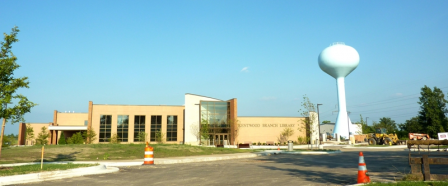 Kentwood LandfillThe 72-acre Kentwood Landfill Superfund site is located in Kentwood, Michigan. Landfill operations from the 1950s to 1976 led to soil and groundwater contamination. EPA listed the site on the Superfund program’s National Priorities List in 1983. The City of Kentwood and Kent County worked with EPA to collect and treat groundwater, install a passive gas ventilation system, maintain the landfill cap and enforce groundwater use restrictions. Cleanup reached completion in 1995. The local governments also worked with EPA to identify future uses for the site that would be compatible with the remedy. The City of Kentwood developed plans for a new public library. In August 2010, Kent District Library opened a 46,000-square-foot, two-story facility on site. The Kentwood Branch Library is named after Richard L. Root, former mayor of Kentwood. In 2012, the City of Kentwood worked with EPA to update land use restrictions and agreements to allow for on-site storage of inert materials that do not disturb the landfill cover. Kent County will ensure safe use of the library and other nearby buildings by installing an active gas ventilation system to ensure that landfill gas does not migrate.
Kentwood LandfillThe 72-acre Kentwood Landfill Superfund site is located in Kentwood, Michigan. Landfill operations from the 1950s to 1976 led to soil and groundwater contamination. EPA listed the site on the Superfund program’s National Priorities List in 1983. The City of Kentwood and Kent County worked with EPA to collect and treat groundwater, install a passive gas ventilation system, maintain the landfill cap and enforce groundwater use restrictions. Cleanup reached completion in 1995. The local governments also worked with EPA to identify future uses for the site that would be compatible with the remedy. The City of Kentwood developed plans for a new public library. In August 2010, Kent District Library opened a 46,000-square-foot, two-story facility on site. The Kentwood Branch Library is named after Richard L. Root, former mayor of Kentwood. In 2012, the City of Kentwood worked with EPA to update land use restrictions and agreements to allow for on-site storage of inert materials that do not disturb the landfill cover. Kent County will ensure safe use of the library and other nearby buildings by installing an active gas ventilation system to ensure that landfill gas does not migrate.
For more information:
Kysor Industrial Corp.
The Kysor Industrial Corp. Superfund site is located in Cadillac, Michigan, within the Cadillac Industrial Park. Since 1959, Kysor Industrial Corporation has been operating an automotive parts plant on site. Operators dumped barrels of spent solvent and degreaser directly onto the ground behind the plant. This activity resulted in the contamination of soil and groundwater beneath the site. EPA added the site to the Superfund program’s National Priorities List (NPL) in 1989. Cleanup activities included removal and treatment of contaminated soils and groundwater extraction and treatment. This remedy also concurrently addresses groundwater contamination from the nearby Northernaire Plating Superfund site, which shares the groundwater table with the Kysor Industrial Corp. Superfund site. Groundwater treatment continues. Operators discharge treated groundwater into the Clam River. Land use controls prevent the use of contaminated groundwater as a drinking water source. The Kysor Corporation continues to operate the automotive part manufacturing plant.
For more information:
Lower Ecorse Creek Dump
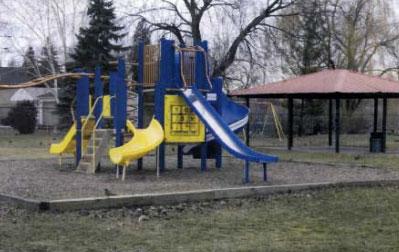 Lower Ecorse Creek DumpThe Lower Ecorse Creek Dump Superfund site includes six residential blocks on the bank of the Ecorse River in Wyandotte, Michigan, 6 miles southwest of Detroit. Prior to development, the area was wetlands, which developers filled with waste material. In 1989, a local resident reported that he had exposed blue-stained soil during excavation work for a new driveway. The resident also reported blue material on several nearby lots and blue material seeping into the basement of his home. The blue color in the soil resulted from contamination. EPA immediately covered the contaminated soil with clean top soil to protect human health and the environment. In 1994, EPA added the site to the Superfund program’s National Priorities List (NPL). EPA removed the stained soil and cleaned up and repaired the damaged homes. By 2000, EPA completed removal and restoration activities at the residential portion of the site. In 2001, EPA conducted additional cleanup activities at a 1-acre neighborhood park at the site. EPA continues to monitor and maintain the soil cover over the park to ensure that the park portion of the site remains safe for continued use. The park includes a playground, swing set, pavilion, basketball court and grass-covered open space for general recreational use. EPA deleted the site from the NPL in 2005. In 2006, commercial redevelopment of the Oak Street portion of the site began. Primarily residential land use continues at the site.
Lower Ecorse Creek DumpThe Lower Ecorse Creek Dump Superfund site includes six residential blocks on the bank of the Ecorse River in Wyandotte, Michigan, 6 miles southwest of Detroit. Prior to development, the area was wetlands, which developers filled with waste material. In 1989, a local resident reported that he had exposed blue-stained soil during excavation work for a new driveway. The resident also reported blue material on several nearby lots and blue material seeping into the basement of his home. The blue color in the soil resulted from contamination. EPA immediately covered the contaminated soil with clean top soil to protect human health and the environment. In 1994, EPA added the site to the Superfund program’s National Priorities List (NPL). EPA removed the stained soil and cleaned up and repaired the damaged homes. By 2000, EPA completed removal and restoration activities at the residential portion of the site. In 2001, EPA conducted additional cleanup activities at a 1-acre neighborhood park at the site. EPA continues to monitor and maintain the soil cover over the park to ensure that the park portion of the site remains safe for continued use. The park includes a playground, swing set, pavilion, basketball court and grass-covered open space for general recreational use. EPA deleted the site from the NPL in 2005. In 2006, commercial redevelopment of the Oak Street portion of the site began. Primarily residential land use continues at the site.
For more information:
Metal Working Shop
The 2-acre Metal Working Shop Superfund site is located in Lake Ann, Michigan. From 1974 to 1977, the site was a metal finishing workshop. Shop operators dumped rinse waters from the metal working process on the ground. These improper disposal practices threatened groundwater quality in surrounding residential areas. EPA added the site to the Superfund program’s National Priorities List (NPL) in 1990 and conducted extensive groundwater and surface soil testing. The results showed that the contaminant concentrations were not high enough to pose a threat to human health and the environment. As a result, EPA deleted the site from the NPL in 1992. Currently, most of the site is a designated forest, and woodworking occurs on a small part of the site. In 2000, the Lake Ann Camp and Retreat Center purchased the property.
For more information:
Northernaire Plating
The 13-acre Northernaire Plating Superfund site is located in an industrial park in Cadillac, Michigan. From 1971 to 1981, Northernaire operated an electroplating facility on the site and used metal in its industrial processes. Through improper handling and faulty sewer lines, hazardous metals leaked into site soil and groundwater. In 1983, EPA added the site to the Superfund program’s National Priorities List (NPL). EPA immediately removed chemical containers, drums and sewer lines. In 1995, EPA facilitated cleanup activities, including installation and operation of an extensive groundwater extraction and treatment system, new discharge piping and a soil vapor extraction system. The remedy also addresses the groundwater contamination from the nearby Kysor Industrial Corporation Superfund site. The remedy achieved the cleanup goals outlined for the Northernaire site; however, the remedy continues to operate in order to clean up groundwater at the Kysor Industrial site. No restrictions are necessary to protect human health or the environment. As a result, EPA is currently working to delete the site from the NPL. A trucking company currently owns and operates at the facility.
For more information:
Organic Chemicals, Inc.
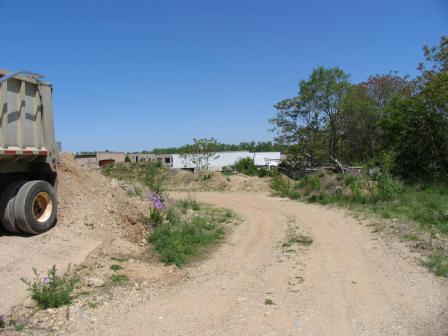 Organic Chemicals, Inc.The 5-acre Organic Chemicals, Inc. Superfund site is located in Grandville, Michigan. Several petroleum-related industries operated on site from 1941 until 1991. Chemical spills and leaking waste lagoons contaminated groundwater and soil at the site. EPA placed the site on the Superfund program’s National Priorities List (NPL) in 1983. Cleanup workers installed a groundwater extraction and treatment system and removed contaminated soil. In 2006, a Grandville-based trucking company purchased the site. The company currently uses the site for industrial purposes as a truck parking center.
Organic Chemicals, Inc.The 5-acre Organic Chemicals, Inc. Superfund site is located in Grandville, Michigan. Several petroleum-related industries operated on site from 1941 until 1991. Chemical spills and leaking waste lagoons contaminated groundwater and soil at the site. EPA placed the site on the Superfund program’s National Priorities List (NPL) in 1983. Cleanup workers installed a groundwater extraction and treatment system and removed contaminated soil. In 2006, a Grandville-based trucking company purchased the site. The company currently uses the site for industrial purposes as a truck parking center.
For more information:
- Organic Chemicals, Inc., Grandville, MI - Situation Assessment (PDF) (11 pp, 1.8 MB, About PDF)
- Superfund Site Profile Page
PMC Groundwater
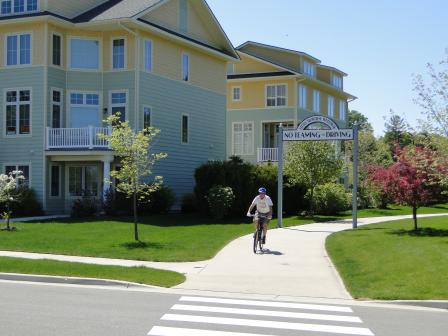 PMC GroundwaterThe PMC Groundwater Superfund site is located on the shores of Lake Michigan’s Little Traverse Bay in Petoskey, Michigan. The Petoskey Manufacturing Company (PMC) operated a die casting plant at the site. Improper disposal practices contaminated area groundwater, soil and the town’s municipal well. EPA placed the site on the Superfund program’s National Priorities List (NPL) in 1983. Cleanup activities included removing contaminated soil and the contaminated well, and monitoring groundwater. Deed restrictions limit the future use of the groundwater. EPA, the Michigan Department of Environmental Quality, the City of Petoskey and local developers worked together on the cleanup and redevelopment of the site and surrounding waterfront area. This collaboration and the City’s visionary planning and creative financing strategies transformed the site. Today, the site supports a residential, commercial and recreational waterfront. The site also houses new condominiums with integrated all-underground utilities, an improved road, parking and a lakefront bicycle path.
PMC GroundwaterThe PMC Groundwater Superfund site is located on the shores of Lake Michigan’s Little Traverse Bay in Petoskey, Michigan. The Petoskey Manufacturing Company (PMC) operated a die casting plant at the site. Improper disposal practices contaminated area groundwater, soil and the town’s municipal well. EPA placed the site on the Superfund program’s National Priorities List (NPL) in 1983. Cleanup activities included removing contaminated soil and the contaminated well, and monitoring groundwater. Deed restrictions limit the future use of the groundwater. EPA, the Michigan Department of Environmental Quality, the City of Petoskey and local developers worked together on the cleanup and redevelopment of the site and surrounding waterfront area. This collaboration and the City’s visionary planning and creative financing strategies transformed the site. Today, the site supports a residential, commercial and recreational waterfront. The site also houses new condominiums with integrated all-underground utilities, an improved road, parking and a lakefront bicycle path.
For more information:
- Reuse and the Benefit to Community: PMC Groundwater Case Study (2014) (PDF) (13 pp, 1.2 MB, About PDF)
- Superfund Site Profile Page
Roto-Finish Co., Inc.
The 7-acre Roto-Finish Co., Inc. Superfund site is located in Portage, Michigan. From 1950 to 1988, the company manufactured equipment and mechanical parts at the site. Operators discharged wastewater into a lagoon. From 1979 to 1984, the Roto-Finish Company, under oversight from the Michigan Department of Environmental Quality, cleaned up the site. Cleanup activities included excavating the lagoon and removing surface soils. Cleanup also involved disposing of excavated materials and placing clean material in excavated areas. EPA added the site to the Superfund program’s National Priorities List (NPL) in 1986. Long-term monitoring will continue as the contamination naturally degrades. Groundwater use restrictions are in place until groundwater meets drinking water standards. Central Manufacturing Services, Inc. uses the facility as a commercial warehouse.
For more information:
Shiawassee River
The Shiawassee River Superfund site spans 8 miles of the Shiawassee River. The Cast Forge Company operated an aluminum casting facility in Howell, Michigan from 1969 to 1973. The company released contaminated wastewater from on-site lagoons to the Shiawassee River and surrounding wetlands. These activities contaminated soils, lagoons and the river. EPA added the site to the Superfund program’s National Priorities List (NPL) in 1983. Cast Forge Company filled the lagoons and removed contaminated soils. The company also provided funding for restoration activities, such as dredging, on the southern part of the Shiawassee River. EPA completed cleanup activities by 2005. Efforts included issuing a fish advisory for the area to discourage fish consumption. Currently, commercial businesses use the site including a recycling center, tire store, landscaping supplier, industrial equipment supplier and an employment service.
For more information:
Tar Lake
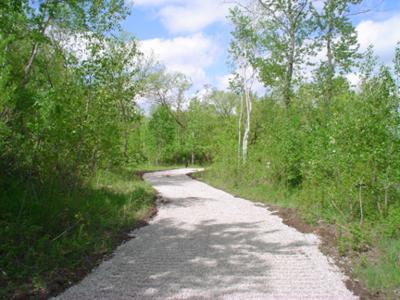 Tar LakeThe 189-acre Tar Lake Superfund site surrounds a dry 4-acre pond in Mancelona Township, Michigan. From 1882 until 1945, Antrim Iron Company operated an iron works facility that disposed of wastes in the pond, referred to as Tar Lake. Disposal practices resulted in groundwater contamination. In 1983, EPA added the site the Superfund program’s National Priorities List (NPL). Cleanup activities included removal of tar waste, contaminated soil as well as containment and treatment of groundwater. EPA deleted the 45-acre Eastern Tailings Area (ETA) of the site from the NPL in 2005, after completing cleanup activities. In 2009, Mancelona Renewable Resources (MRR) purchased a 115-acre area of the site, including the deleted ETA area. In 2011, EPA deleted the remaining 75-acre portion of the site purchased by MRR from the NPL. MRR considered constructing a biomass alternative energy facility on the site. Community Resources Development (CRD), a nonprofit agency, owns 54 acres of the site. EPA and MDEQ have been working with CRD and a railroad company to redevelop 24 acres of CRD’s property adjacent to Route 131 for industrial use. In 2014, Great Lakes Central Railroad purchased 5 acres of CRD’s property. EPA and MDEQ continue to facilitate reuse of the site. Commercial businesses also operate on the site and a municipal wood waste storage area is on-site. MDEQ continues to operate the groundwater treatment system and conduct groundwater monitoring.
Tar LakeThe 189-acre Tar Lake Superfund site surrounds a dry 4-acre pond in Mancelona Township, Michigan. From 1882 until 1945, Antrim Iron Company operated an iron works facility that disposed of wastes in the pond, referred to as Tar Lake. Disposal practices resulted in groundwater contamination. In 1983, EPA added the site the Superfund program’s National Priorities List (NPL). Cleanup activities included removal of tar waste, contaminated soil as well as containment and treatment of groundwater. EPA deleted the 45-acre Eastern Tailings Area (ETA) of the site from the NPL in 2005, after completing cleanup activities. In 2009, Mancelona Renewable Resources (MRR) purchased a 115-acre area of the site, including the deleted ETA area. In 2011, EPA deleted the remaining 75-acre portion of the site purchased by MRR from the NPL. MRR considered constructing a biomass alternative energy facility on the site. Community Resources Development (CRD), a nonprofit agency, owns 54 acres of the site. EPA and MDEQ have been working with CRD and a railroad company to redevelop 24 acres of CRD’s property adjacent to Route 131 for industrial use. In 2014, Great Lakes Central Railroad purchased 5 acres of CRD’s property. EPA and MDEQ continue to facilitate reuse of the site. Commercial businesses also operate on the site and a municipal wood waste storage area is on-site. MDEQ continues to operate the groundwater treatment system and conduct groundwater monitoring.
For more information:
- Tar Lake, Mancelona, MI - Situation Assessment (PDF) (24 pp, 1.9 MB, About PDF)
- Tar Lake, Mancelona, MI - Reuse Plan (PDF) (47 pp, 5.6 MB)
- Superfund Site Profile Page
Torch Lake
The 2,700-acre Torch Lake Superfund site is located on Michigan’s Keweenaw Peninsula, within the Torch Lake Area of Concern. The site includes lakes, ponds, waterways and tailing piles. From the 1890s until 1969, copper mining activities included the deposition of mine wastes into the surrounding surface water and soil, resulting in groundwater, surface water and soil contamination. In 1986, EPA added the site to the Superfund program’s National Priorities List (NPL). EPA’s cleanup activities included construction of a cap, slag removal activities and habitat restoration. EPA deleted portions of the site in 2002, 2004, 2012 and 2013 as site cleanup goals have been met. EPA continues to provide oversight for State of Michigan and local community site monitoring efforts. Local municipalities continue to operate well fields and sewage lagoons on site. Habitat restoration activities on Torch Lake’s Gull Island included the construction of a recreation area with nature trails and a campground, and a unique outreach and monitoring program that introduces local high school students to biodiversity and soil fertility studies. Residential redevelopment on the Hubbell/Tamarck City portion of the site is underway. Redevelopment has resulted in several residential developments on site, including the communities of Isle-Royale, Dollar Bay, Mason Sands and Point Mills. A 2008 reuse plan outlined plans for a 25-acre portion of the site known as Quincy Smelter, which is located within the Keweenaw National Historical Park, to be recognized as part of the Quincy Mining Company National Historic Landmark (NHL). The reuse plan includes extending the landmark’s historical tour and establishing a waterfront recreational area for fishing and picnicking.
For more information:
Velsicol Burn Pit
The 5-acre Velsicol Burn Pit Superfund site is located in St. Louis, Michigan. Between 1956 and 1970, the Michigan Chemical Corporation, later known as the Velsicol Chemical Corporation (Velsicol), operated on site. Operators burned and disposed of industrial waste products and pesticides at the facility. Industrial waste and pesticides contaminated area groundwater and surface soils. After EPA initially proposed the site to the Superfund program’s National Priorities List (NPL), Velsicol removed contaminated soil. EPA added the site to the NPL in March 2010. EPA will continue working with Velsicol on cleanup activities. Currently, a neighboring golf club uses the former burn area as an out-of-bounds area for their golf course. EPA ensures workers, golfers and visitors have little to no contact with contaminated soil and groundwater.
For more information:
Velsicol Chemical Corp. (Michigan)
The Velsicol Chemical Corp. (Michigan) Superfund site is located in St. Louis, Michigan. Since 1936, the Michigan Chemical Corp. (now known as Velsicol) produced chemical products, including pesticides, at the 54-acre facility. After years of poor waste management practices, the facility shut down in 1977. Investigations of site conditions revealed the presence of pesticides in soil and groundwater. Site discharges also contaminated surrounding properties, including residential homes and the Pine River. Currently, a fish advisory prevents consumption of fish. In 1982, Velsicol entered into an agreement with EPA and the State of Michigan to build a cap and slurry wall around the facility to prevent further migration of contaminants. EPA added the site to the Superfund program’s National Priorities List (NPL) in September 1983. EPA and the Michigan Department of Environmental Quality collected groundwater, sediment and fish tissue samples to determine the full extent of contamination. Cleanup activities included the removal of sediments from Pine River. EPA continues studying and designing cleanup plans to ensure protection of human health and the environment. To date, EPA completed cleanup work at 52 homes impacted by the site and plans to remediate 47 more homes in 2015. EPA is also funding the replacement of the City of St. Louis municipal drinking water supply and designing additional cleanup activities at the former chemical plant.
For more information:
- Velsicol Chemical Corporation, St. Louis, MI - Reuse Plan (PDF) (51 pp, 945 K, About PDF)
- Superfund Site Profile Page
Wurtsmith Air Force Base
The 5,223-acre Wurtsmith Air Force Base site is located in Oscoda, Iosco County, Michigan. Beginning in 1923, the site operated as a military base. Gunnery practice, winter maneuvers, and aircraft landings took place on site until World War II. In 1960, the U.S. Air Force Strategic Air Command began its use of the site and established several air refueling squadrons. In 1977, the base mission at the site expanded to include the B-52 heavy, long-range bomber. In the same year, ground water sampling detected contamination in drinking water wells at the site. Additional sampling in 1979 and 1980 also detected contamination. Base operations had resulted in ground water and soil contamination at the site. In 1993, the site closed under the Base Realignment and Closure Act (BRAC). EPA and the U.S. Air Force have implemented a number of remedies at the site to address contamination, including pumping and treating ground water and installing air sparging systems. The U.S. Air Force continues to transfer portions of the site to the Oscoda Airport Authority for reuse as an industrial park and airfield. Uses include cargo shipment and maintenance of jumbo jet aircraft by a private company on site. Of the 5,223 acres, the U.S. Air Force owns 1,943 acres. The remaining portions of the site have undergone redevelopment and include a medical center, community college, residential communities and U.S. Air Force museums.
For more information:
